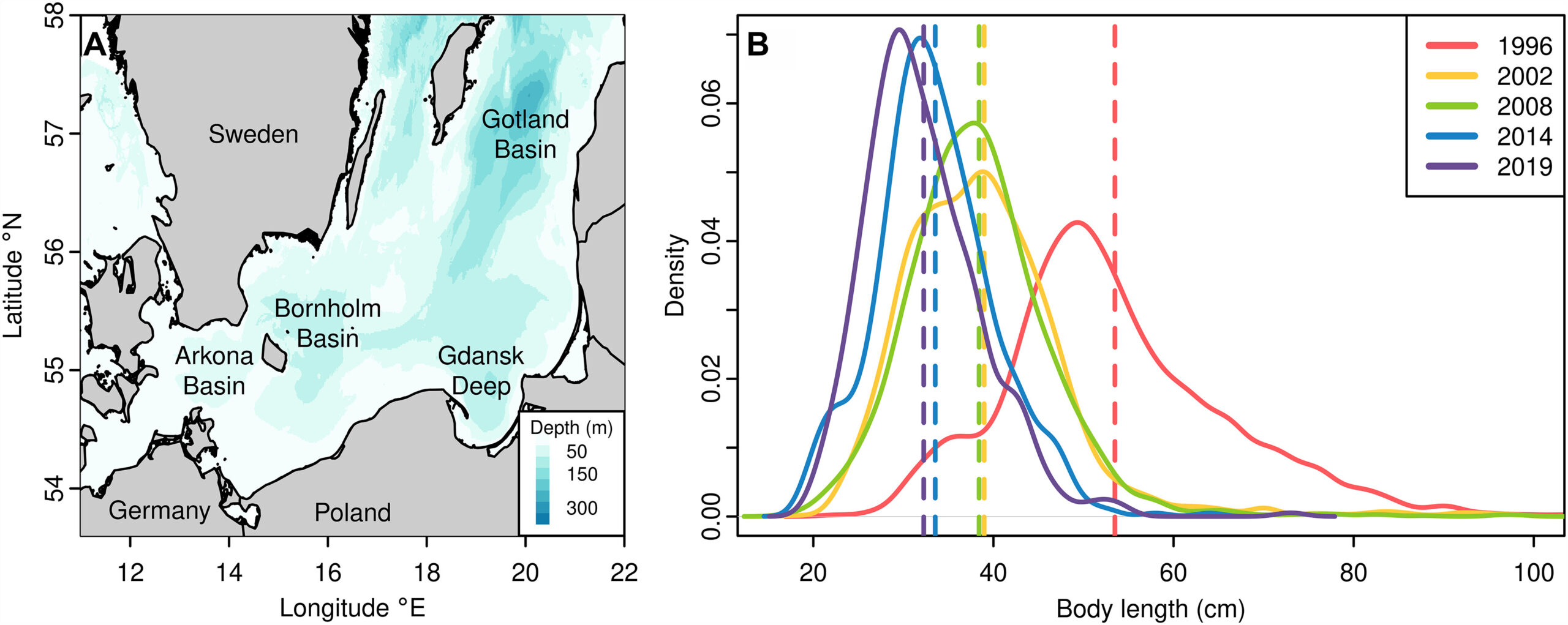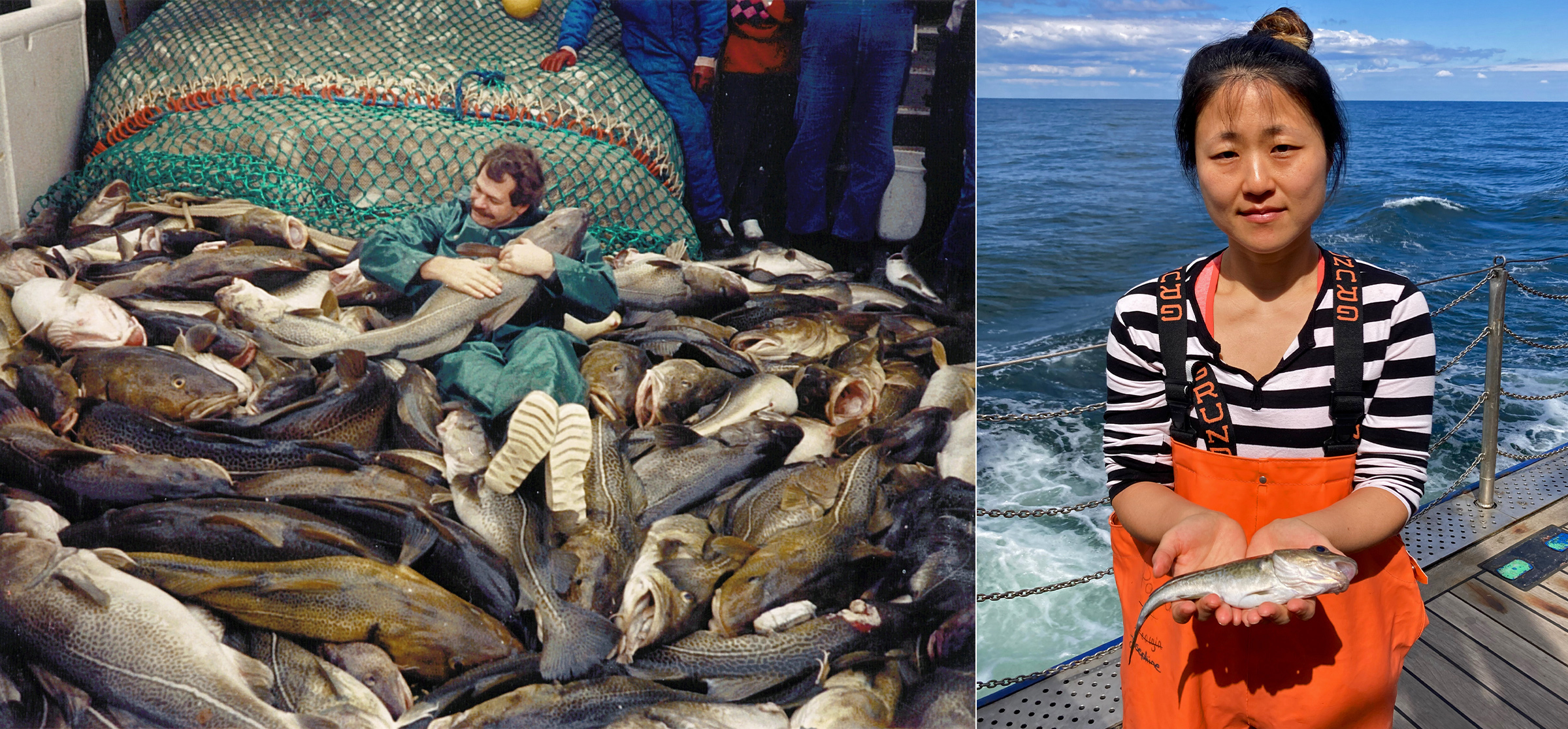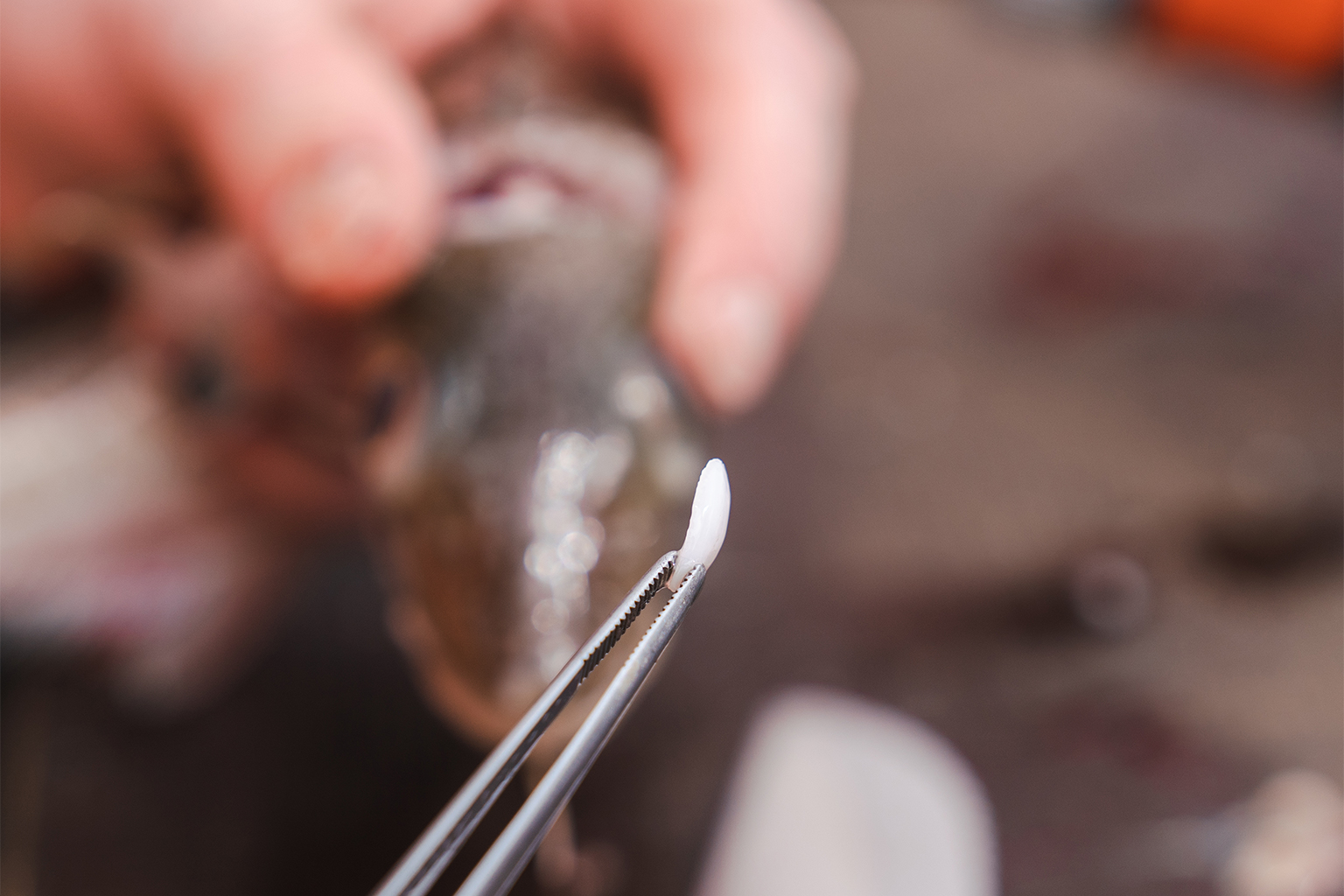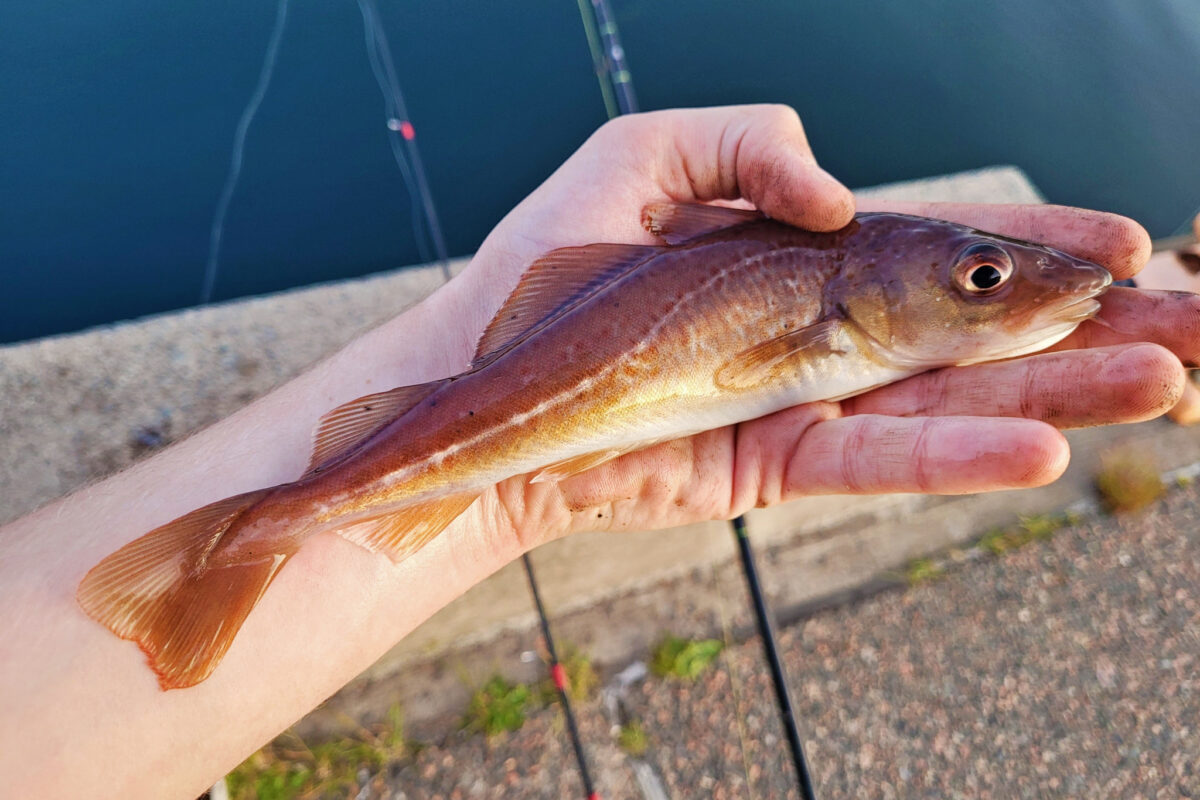- The eastern Baltic cod has shrunk dramatically in size in recent decades due to rapid evolution — changes at the genetic level — caused by decades of intensive fishing, a new study says.
- Eastern Baltic cod, which are a distinct subpopulation of Atlantic cod (Gadus morhua), lost nearly half of their length and four-fifths of their weight from 1996 until 2019.
- It’s one of the first studies to show that a marine species has evolved in response to fishing pressure.
- An expert said the shrinking of the cod was “alarming,” and called on fisheries managers to work to protect fish biomass and size, given this new evidence of fisheries-induced evolution.
The eastern Baltic cod has shrunk dramatically in size in recent decades due to rapid evolution — changes at the genetic level — caused by decades of intensive fishing, a new study says. It’s one of the first studies to show that a marine species has evolved in response to fishing pressure.
Sampled Eastern Baltic cod, which are a distinct subpopulation of Atlantic cod (Gadus morhua), lost nearly half of their length from 1996 until 2019, according to the study, which was published in the journal Science Advances on June 25. The data collected for the study also showed that the fish lost nearly four-fifths of their weight over the same period.
“If you just see the data, it’s crazy,” the study’s first author, Kwi Young Han, told Mongabay. Han is a postdoctoral researcher in marine evolutionary ecology at the GEOMAR Helmholtz Centre for Ocean Research Kiel in Germany; the study emerged from her Ph.D. work.
Han’s Ph.D. supervisor and co-author on this paper, Thorsten Reusch, said the findings had disturbing implications.
“When the largest individuals are consistently removed from the population over many years, smaller, faster-maturing fish gain an evolutionary advantage,” Reusch said in a press release. “What we are observing is evolution in action, driven by human activity. This is scientifically fascinating, but ecologically deeply concerning.”

While scientists have been aware that the length of eastern Baltic cod has decreased in recent decades, this study quantifies that change. The more novel aspect of the study, however, is in connecting the size data with genetic analysis.
Loosely related work showing some evidence of fisheries-induced evolution has been done by other researchers, including a 2023 study on Atlantic cod, a 2022 study on Atlantic salmon (Salmo salar), and a 2019 study on lab-raised silversides.
David Conover, professor emeritus in biology at the University of Oregon in the U.S. and a co-author of the 2019 study, told Mongabay that the new GEOMAR-led study, which he wasn’t involved with, presents “probably the strongest” evidence so far that “fishing can cause evolutionary changes in wild populations.” Conover, the former head of the U.S. National Science Foundation’s Division of Ocean Sciences, called it a “very impressive paper.”
One reason it’s convincing, Conover said, is that the eastern Baltic cod serves as a good study subject for fisheries-induced evolution because it doesn’t mix much with other populations, such as Western Baltic cod, so any genetic changes are unlikely to be due to migration.
GEOMAR researchers collected samples of eastern Baltic cod every year between 1996 and 2019, and analyzed their otoliths — small stones in individuals’ ears — to determine age. For other fish species, such analysis can be done visually, much like counting tree rings; but for eastern Baltic cod, reliable age measurement required a new chemical technique developed by Karin Hüssy, a biologist at the Technical University of Denmark and co-author of the study.
Getting precise ages for the sampled individuals allowed the researchers to compare sizes of same-aged cod across the 24-year study period. Their findings revealed that during this time, the median length of mature eastern Baltic cod fell from 52.1 to 32.1 centimeters (20.5 to 12.6 inches), and the theoretical length of the longest possible cod dropped from 115 to 53.9 cm (45.3 to 21.2 in). The median weight fell from 1,356 to 272 grams (48 to 10 ounces), according to Han.


Yet changes in characteristics like length and weight don’t necessarily mean that a species has evolved. In theory, that could happen due to environmental factors like changes in oxygen levels or temperatures; in such cases, fishes’ hardwiring isn’t changing, but their bodies are acclimating to their environment, in what’s known as “phenotypic plasticity.”
To find out if there was a change to the underlying DNA, Han and her team thus turned to genetic analysis. For Atlantic cod, growth is “polygenic,” meaning it’s a trait produced by a number of parts of the genome interacting with one another. Over the study period, gene patterns consistent with smaller fish became more common in the sampled fish, indicating natural selection at work.
Though fishing pressure itself was not a variable in the study, the authors believe it caused the evolutionary pressure. The trawling companies that targeted eastern Baltic cod were only permitted to catch individuals 35 cm (14 in) or longer due to regulations designed to protect juveniles, which included minimum mesh sizes. Trawling was done heavily for decades but was banned in 2019.
“The study is a wonderful example of genomic time travel,” Malin Pinsky, an associate professor of biology at the University of California, Santa Cruz, and co-author of the 2023 paper, told Mongabay in an email.
“The broad message that humans are altering the course of evolution resonates far beyond Baltic cod,” Pinsky, who wasn’t involved in this study, added.
Conover agreed that the study suggests that fisheries-induced evolution could be happening more broadly, saying, “That’s why this got published in a journal like Science Advances,” which is a leading journal known for publishing high-impact research.
Conover said the shrinking of eastern Baltic cod was “alarming,” and that reduced biomass and fish size is something that fisheries managers should seek to avoid. They have the ability to do so using advanced modeling techniques, but without proof that the models are necessary — that fishing is having an evolutionary impact — managers will be reluctant to adopt the models or change their ways, he said.
“That’s why a paper like this is so important,” Conover said. “It’s going to up the dialogue and increase conversations in the management community.”
Banner image: An Atlantic cod (Gadus morhua). Image by Dylan.B via iNaturalist (CC BY-NC 4.0).
Sweeping cuts and deregulation imperil U.S. fisheries, experts warn
Citations:
Han, K. Y., Brennan, R. S., Monk, C. T., Jentoft, S., Helmerson, C., Dierking, J., … Reusch, T. B. (2025). Genomic evidence of fisheries-induced evolution in Eastern Baltic cod. Science Advances, 11(26), eadr9889. doi:10.1126/sciadv.adr9889
Reid, B. N., Star, B., & Pinsky, M. L. (2023). Detecting parallel polygenic adaptation to novel evolutionary pressure in wild populations: A case study in Atlantic cod (Gadus morhua). Philosophical Transactions of the Royal Society B: Biological Sciences, 378(1881). doi:10.1098/rstb.2022.0190
Czorlich, Y., Aykanat, T., Erkinaro, J., Orell, P., & Primmer, C. R. (2022). Rapid evolution in salmon life history induced by direct and indirect effects of fishing. Science, 376(6591), 420-423. doi:10.1126/science.abg5980
Therkildsen, N. O., Wilder, A. P., Conover, D. O., Munch, S. B., Baumann, H., & Palumbi, S. R. (2019). Contrasting genomic shifts underlie parallel phenotypic evolution in response to fishing. Science, 365(6452), 487-490. doi:10.1126/science.aaw7271
Feedback: Use this form to send a message to the author of this post. If you want to post a public comment, you can do that at the bottom of the page.
